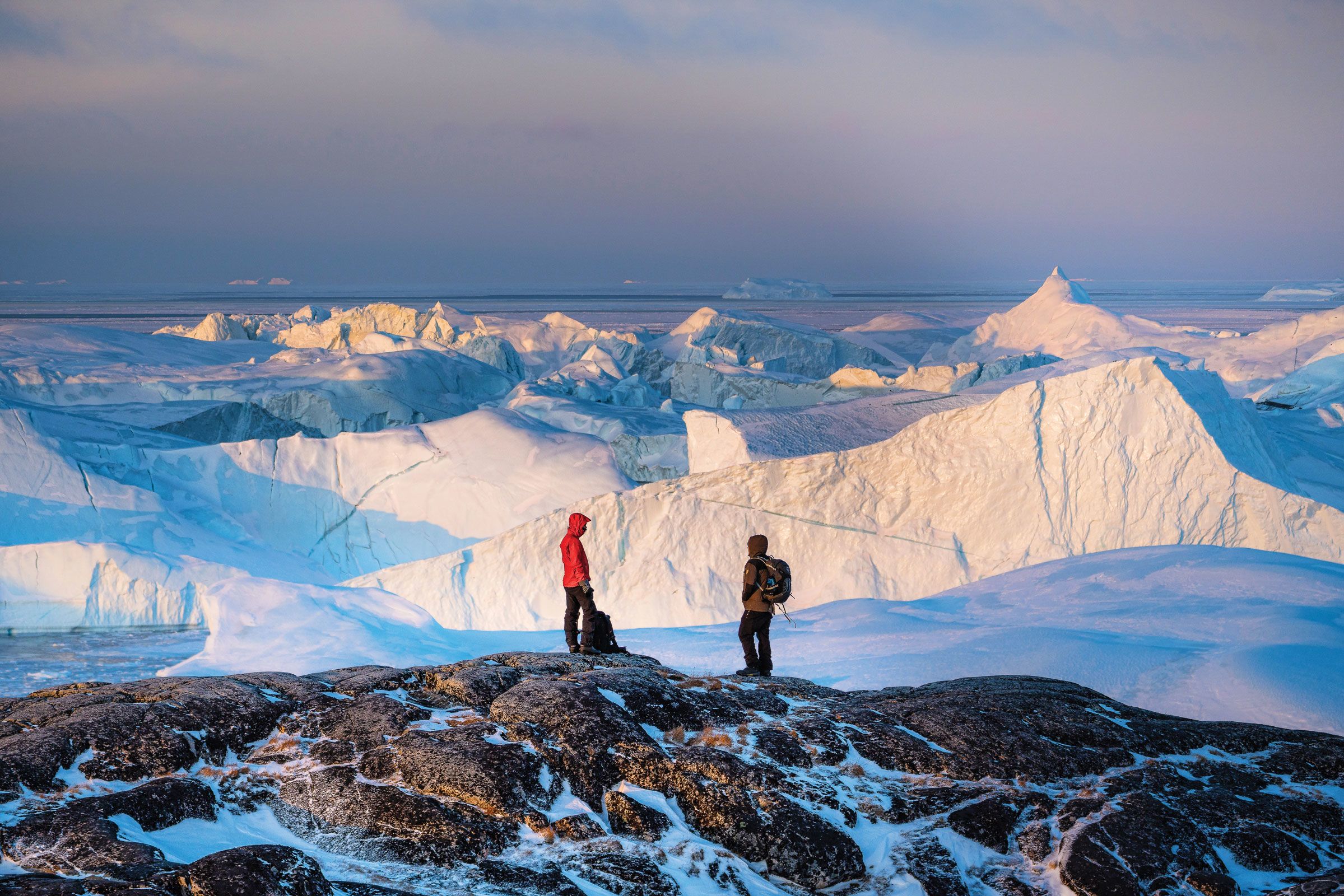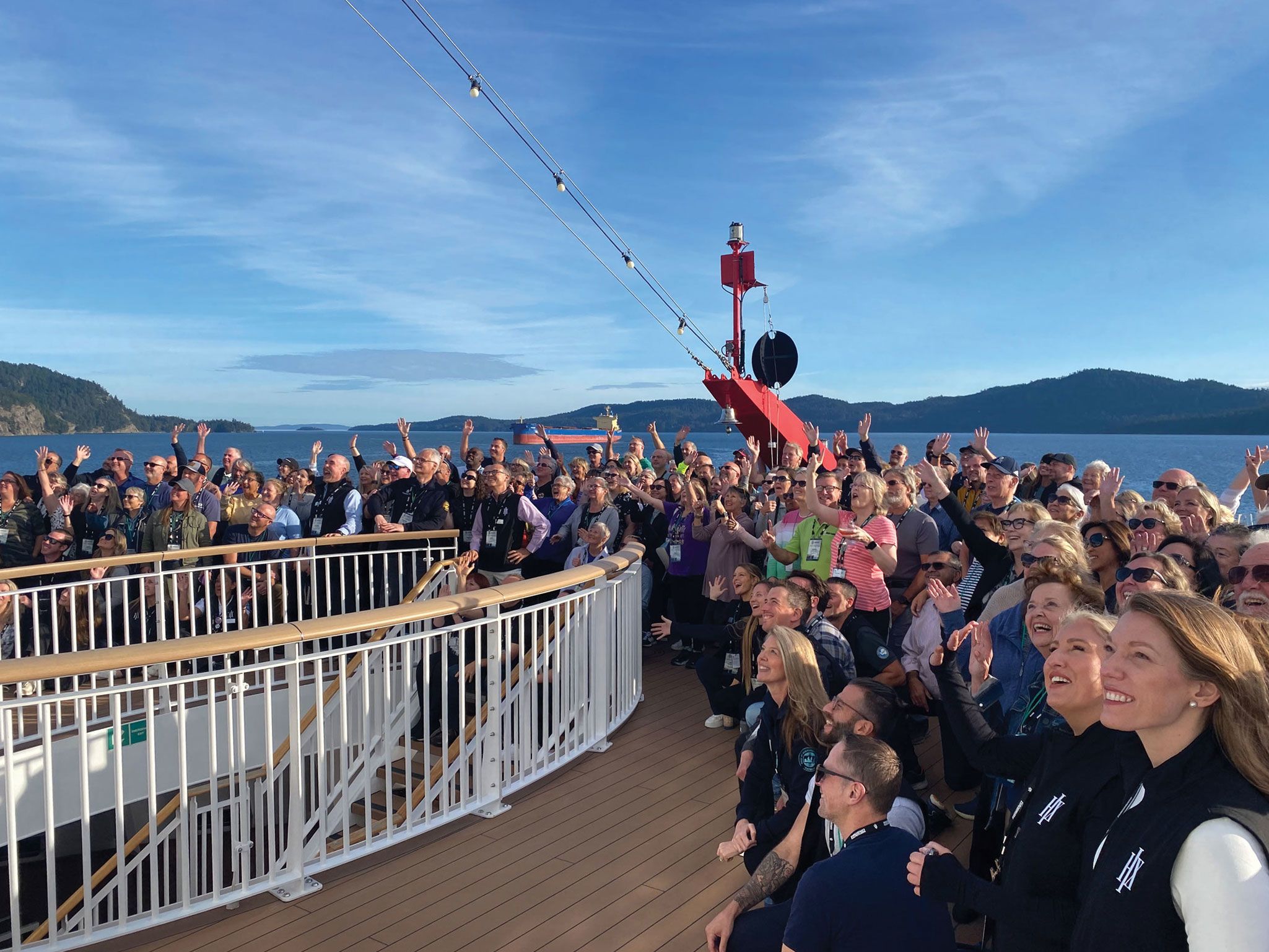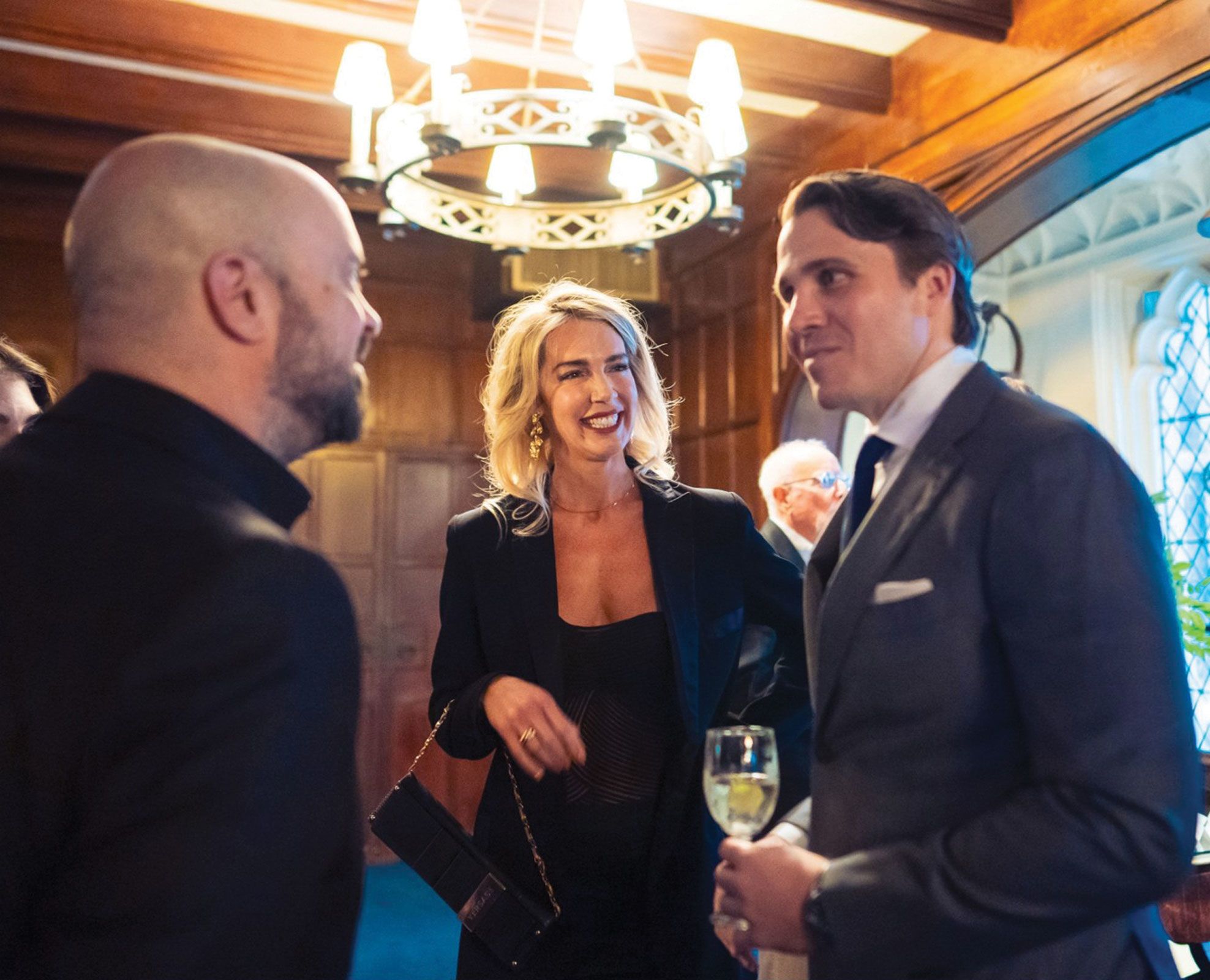Cracking the U.S. market
To tap into the lucrative North American market, international cruise brands like MSC, HX Expeditions and Ponant have to build name recognition, tweak their product and work closely with advisors.
Illustration by Jenn Martins
Illustration by Jenn Martins
As millions settled in to view the Super Bowl in February, chips and dip at the ready, the countdown officially began for MSC Cruises.
The European cruise line had booked a minute-long advertising slot during the game, television real estate that comes with a multimillion-dollar price tag thanks to the tens of millions of viewers who tune in every year. MSC would be using the moment to showcase its newest ship, the MSC World America, built specifically for the American traveler, who it knew would be watching.
In airing the ad on that particular night, however, MSC was also sending a message to viewers and other cruise lines sailing from the U.S.: We’ve arrived.
“We knew this was the year for us to take center stage, as we are on our way to becoming a household name in the U.S.,” said Lynn Torrent, the cruise line’s president for North America.
‘We knew this was the year for us to take center stage, as we are on our way to becoming a household name in the U.S.’
As the global cruise industry grows, the North American cruising population remains its largest source market. In 2024, 59% of cruise passengers worldwide were from North America, a number that increased by 13.4%, to 20.5 million cruisers, from 2023, the highest growth rate of any continent, according to CLIA data. It’s no surprise, then, that many a cruise line with origins abroad, like MSC, are eager to grow their presence here.
But while the U.S. is an attractive market, it’s one where success doesn’t happen overnight, and of course, not every cruise line can budget for a Super Bowl ad slot. It’s also a market where Americans have abundant options for cruise lines of all varieties that have spent years building their reputations and customer loyalty.
“You have to be very smart with your strategy to succeed in the U.S.” said HX Expeditions chief commercial officer Alex Delamere-White, who said that while large, “it’s a competitive market in the cruise space.”
‘You have to be very smart with your strategy to succeed in the U.S. It’s a competitive market in the cruise space.’
To grow here, cruise lines must craft personalized strategies and be prepared to invest in them for the long run, he said.
And while advertising efforts are one component, building strategic and intentional partnerships with travel advisors and fine-tuning the onboard experience are of paramount importance, executives from multiple cruise lines said.
International cruise brands like MSC and HX have been investing in the travel advisor community by adding more staff in the U.S. to work with them.
The French cruise line Ponant shifted its sales team strategy in the past year so that field sales representatives are covering smaller territories, an intentional move to enable them to build more numerous and stronger connections with advisors than they would if spread more thinly, said Samuel Chamberlain, the line’s CEO of the Americas.
The Norwegian line HX recently expanded its U.S.-based sales and marketing teams, and MSC’s U.S.-based team is also growing, Torrent said, adding that the MSC sales team directory advisors have access to is “one of our most valuable resources.”
Some advisors have taken note, and they said it has led to a bump in business.
“We’ve definitely seen an increase in their sales team,” Cruise Planners COO Theresa Scalzitti said of MSC. “That helps, to have more boots on the ground.”
As critical as trade partners are for growing U.S. operations, cultural and structural differences between a cruise line’s home territory and the U.S. can present challenges for navigating the agency landscape.
For cruise lines based abroad, the array of agency structures in the U.S. literally can be a foreign world to navigate, said Steve Smotrys, managing director and senior vice president of commercial in the Americas for HX, who previously held executive sales positions at Seabourn, Cunard and Princess Cruises.
“If you look at all the other markets we sell in, North America is by far the most complex, fragmented, always evolving,” he said. “We’re in a lot of countries where there’s a few big players, and you kind of know who you go to for the business. But here, it’s so much more broad, and … we’re not big, so we can’t go and be everything to everyone.”
‘If you look at all the other markets we sell in, North America is by far the most complex, fragmented, always evolving.’
From the advisor perspective, some companies based abroad use tools and systems that function differently than the advisor is accustomed to, Scalzitti said, which can add frustration to the experience.
Beyond technology, lines based abroad may have different policies than what advisors and U.S.-based cruisers are used to, such as cancellation or group policies that may not be as “advisor-friendly.”
“A lot of the decisions are made overseas, and they’re not maybe always in line with the way that we do business here in North America,” Scalzitti said. “I think the ones that will do well and succeed allow their sales teams or management teams here in North America to have a little bit more autonomy to be able to set some policies, set some decisions.”
‘The lines that succeed allow their teams here in North America to have a little bit more autonomy to set some policies.’
Building U.S. trade partnerships also requires a heavy educational component so that travel advisors not only fully understand the product but are motivated to sell it, HX’s Delamere-White said.
That motivation is particularly important in the expedition market, where travel advisors must often first teach clients that expedition cruises even exist before then selling them on an international cruise line they’ve never heard of.
“We’re quite targeted at what we do,” Delamere-White said. “So yes, there’s them recommending us, but we also need to make sure that they’re really confident to talk about our brand.”
HX has been conducting a multicity road show to meet advisors and help them better understand the brand, Smotrys said.
At a recent stop in Seattle, it shared samples and scientific equipment from an HX ship; Smotrys called it the equivalent of a pop-up science center because scientific engagement is such a prominent part of HX’s onboard experience.
“It’s meant to kind of trigger their imagination,” he said.
Opportunities for advisors to experience the cruise products themselves also help build an understanding of the brand and an authentic desire to sell it, said Dennis Nienkerk, a luxury cruise specialist with Dallas-based Strong Travel Services.
“The key is getting the agent excited to sell it,” he said of brands based abroad. “I don’t like to promote anything heavily. If somebody wants to book something, I’ll book it, but I won’t actively promote unless I personally experienced it.”
‘The key is getting the agent excited to sell it. I won’t actively promote something unless I personally experienced it.’
Delamere-White said HX offers various onboard experiences for advisors, such as a nearly 400-passenger fam trip from Vancouver to Seattle last September, as part of HX’s focus on growing in the U.S.
“Frankly, we wouldn’t be doing those things if we weren’t totally committed to the market,” he said.


Marketing and partnerships
Travel advisors say those travel advisor-focused initiatives to build brand awareness are aided by the lines’ marketing campaigns and organizational partnerships.
MSC’s Super Bowl ad may have been an expensive purchase, but it was also just the start of a national advertising campaign dubbed “Let’s Holiday.” A shortened version of the ad, which features actors Drew Barrymore and Orlando Bloom, remained on television screens through mid-April and still plays in select markets.
Onboard the MSC World America the day of its naming ceremony, guests couldn’t escape the ad’s theme song, Madonna’s “Holiday,” and both Barrymore and Bloom were onboard.
Scalzitti said that MSC’s various marketing campaigns, which expand well beyond television ads, have successfully built awareness and curiosity about the cruise line and that Cruise Planners is seeing growth in MSC sales.
“I think that that has brought a lot of attention to MSC and making people say, ‘What is MSC? What’s it all about?’” she said, adding that increasingly, “if an advisor is giving them some options for cruises, they might be including MSC in that consideration set.”
Having a long-term view toward growth efforts is critical and one area HX now understands well after previously investing in shorter-term initiatives, Delamere-White said. At one point, for example, he said the cruise line had a regional television initiative that was short-term and less fruitful.
Part of striking the right balance is knowing how far resources can stretch. HX is currently focusing campaigns in specific markets like Los Angeles, Seattle and Boston, which have populations that it believes align with its target demographic.
Cruise lines invest in partnerships for the same reason.
Viking’s sponsorship of “Downton Abbey” on PBS beginning in 2011 was just one example of the brand targeting “cultural programming and events through partnerships with like-minded organizations,” said Richard Marnell, the cruise line’s executive vice president of marketing. But it also became the cruise line’s most visible partnership, he said, “establishing Viking as a household name.”
“We continue to run television advertisements on other national programming targeting our core demographic, and we have forged partnerships with prestigious cultural institutions in the U.S. such as the Los Angeles Philharmonic, the Metropolitan Opera and Ballet Sun Valley,” he said.
‘We have forged partnerships with prestigious cultural institutions in the U.S.’
Ponant has partnerships with Smithsonian and the Explorers Club, and HX is Audubon’s exclusive travel partner.
In Ponant’s case, representatives of those partner organizations are onboard with guests during certain sailings.
“We attract a more educated, more interested traveler that’s engaged with learning, is engaged with science, that’s engaged with the arts, makes more philanthropic donations, for example,” Chamberlain said of Ponant clientele. “So we have partnerships and alliances that really give that great third voice and give great opportunities for our guest experience on our ship.”
‘We have partnerships and alliances that give great opportunities for our guest experience on our ship.’



Catering to North Americans
Both cruise lines and advisors say the onboard experience has to be tailored to accommodate some North American tastes but should also retain its own flavor.
Delamere-White said that shorter itineraries and all-inclusive fares are attractive to Americans, so when looking to attract more U.S. cruisers, HX opened more 10-day sailings and switched to an all-inclusive structure, he said. This year, it also began offering flight-inclusive Greenland sailings direct from Newark Liberty Airport.
In designing the MSC World America, a sister ship to the MSC World Europa, MSC made adjustments designed to match U.S. culture, such as introducing a main stage performance inspired by the film “Dirty Dancing.”
But the cruise line has also described the ship’s design as retaining a European elegance, and its current ad campaign touts “American comfort meets European style.”
Cruise elements that speak to origins abroad can be a selling point for segments of the American travel market.
Italy-based Costa Cruises sees strong interest from Latinos living in the U.S. who enjoy the multilingual nature of the cruise line’s sailings, said Dario Rustico, general manager for North and South America.
‘Latinos are more at ease on a cruise like Costa that … has languages like Spanish predominantly spoken onboard.’
“They are more familiar, more at ease to travel on a cruise like Costa that has languages like Spanish predominantly spoken onboard,” Rustico said.
Ponant is not only proud of what Chamberlain describes as a “French flair” but knows that non-French guests appreciate it.
The ship itself, regardless of the destination, can feel like a trip to another country.
In a cruise market rife with competition, being a European cruise line can be exactly what makes a brand like Ponant stand out from the crowd.
As Chamberlain put it, “Who doesn’t love France?”









